|
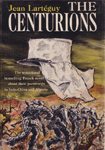
Click book covers for more information. |
|
THE CENTURIONS, 1961. This is Jean Larteguy's
most famous book that garnered international acclaim and sold millions
of copies. It was also the basis for the movie, The Lost Command, starring
Anthony Quinn. In his autobiography, Larteguy writes that he got the name
of the book from when he was traveling with the Foreign Legion in the
Sahara and came across an old Roman column at an oasis. Inscribed on the
column from 2000 years before was "Titus Caius Germanicus, centurion of
the Xth Legion" and underneath it from a more recent time, "Friedrich
Germanicus, of the 1st R.E.P. (French Paratroop Regiment)."
The story begins in May 1954 with the defeat of the French army at Dien
Bien Phu. The Vietnamese victors march their French prisoners into
communist re-education camps. During their time in captivity, the
French paratroop officers who survive the ordeal to be repatriated, bond
together and try to utilize communist "revolutionary war" tactics in order
to win their next war in Algeria. The book ends with the French centurions
fighting the Battle of Algiers with propaganda, torture, terror and any
tactic in order to win so that the last remnants of their empire could
survive.
|
|
|
|
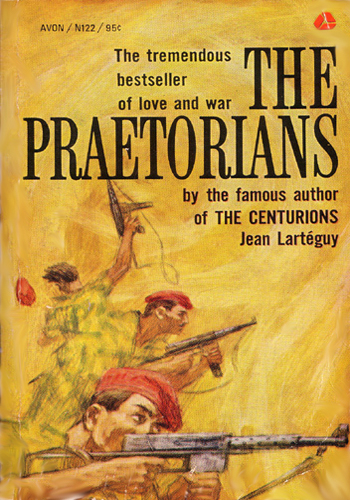 |
|
THE PRAETORIANS, 1963. This
book continues where The Centurions leaves off in 1956. In Algeria, the
French paratroop officers instigate the May 13th Coup that results in the
fall of the Fourth Republic and De Gaulle being brought to power by these
new praetorians.
|
|
|
|
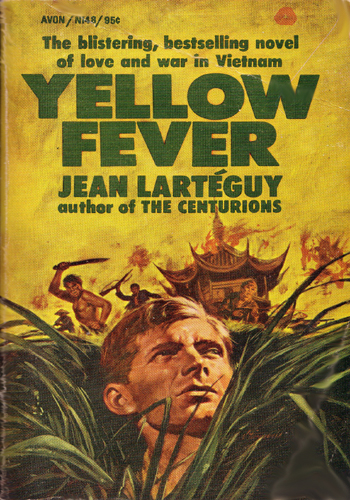 |
|
YELLOW FEVER, 1965. This novel takes place in Vietnam right
after the 1954 Geneva Convention during the War of the Sects. As the French
prepare to leave Vietnam, the different sects: the army, the government,
the communists, the monks, the CIA and Vietnamese bandits begin to fight
each other for control of the country. "Those who loved them [Hanoi &
Saigon]--and they were legion--caught a disease from them which they have
never managed to cure: a sort of yellow fever: a kind of nostalgia which
reaches its highest pitch on gloomy evenings or days of rejection." |
|
|
|
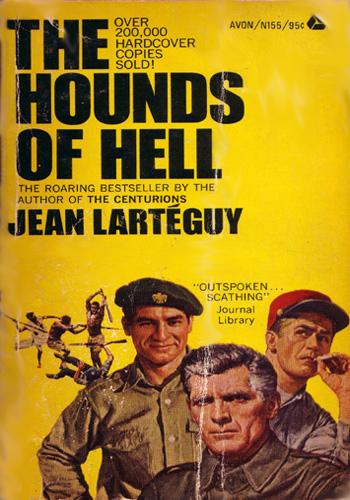 |
|
THE HOUNDS OF HELL, 1966. This
novel centers around the events in the Congo from 1960-1962. A French colonel,
a SDECE officer and an ex Foreign Legionnaire team up as mercenaries to
wage their private war in Katanga against Congolese factions, the Belgians
and the UN. The French colonel, Ronciere, is undoubtedly based on the real
Colonel Trinquier who saw action in Indochina, Algeria and the Congo. Trinquier
wrote a counter-insurgency manual based on his experiences fighting in people's
wars called "Modern Warfare." |
|
|
|
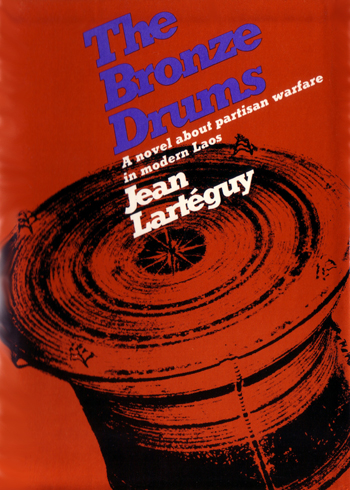 |
|
THE BRONZE DRUMS, 1967. Based in Laos from the end of WWII
up to the early 1960s. A French intelligence officer tries to save Laos
from the all consuming war raging in Southeast Asia by trying to get the
warring parties to agree to a policy of neutrality. The bronze drums are
symbolic of war that is not war, for according to legend they were used
centuries earlier to make the hill people think from the noise they made
that there were troops in the valley. |
|
|
|
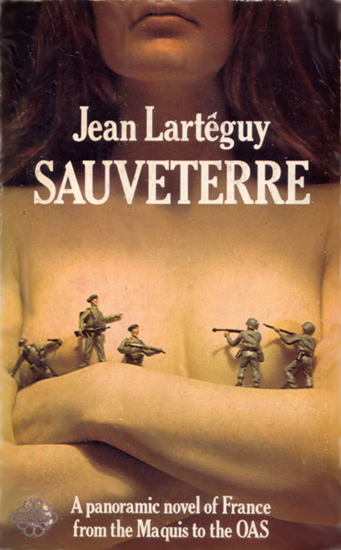 |
|
SAUVETERRE, 1968. This novel
is about a war torn town in Occupied France during WWII called Sauveterre
and the esoteric meaning it has for the main characters who live and die
for it. The town has a history of rebelling against authority and this is
the theme of the book as each character fights against the status quo: be
it Nazi occupying forces, the Church, local government officials or DeGaulle's
secret police. |
|
|
|
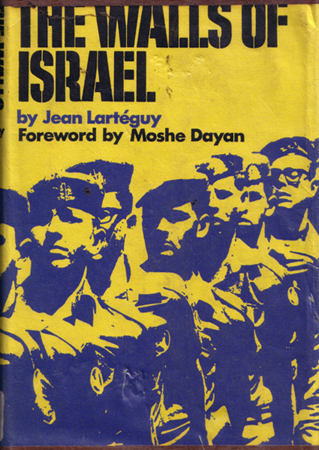 |
|
THE WALLS OF ISRAEL, 1969. A non-fiction report based on Larteguy's
travels through Israel and the Middle East. He interviewed senior commanders
in the Israeli military and went out on operations with the soldiers of
the IDF. Unusual for Larteguy, he doesn't keep an objective point of view
and this book is pro-Israel to the point where it clouds his judgement.
He plainly feels that the IDF is the "army in which I would like to fight"
as he wrote in the Centurions and therefore they can do no wrong. A few
years later the IDF would take a beating in the first few days of the October
War of 1973 thus making much of this book superfluous. |
|
|
|
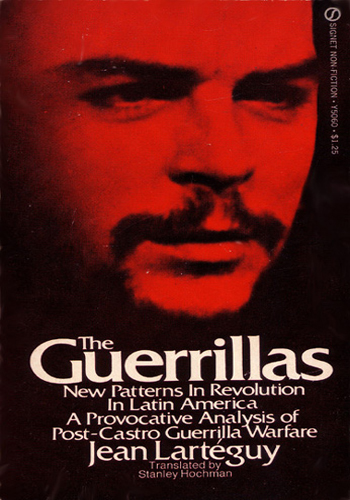 |
|
THE GUERRILLAS, 1970. A
non-fiction report based on Larteguy's travels through Latin America. He
interviewed men from all sides of the conflicts: the guerrillas, the
government forces and US officers from the Southern Command. Larteguy
provides an objective look at revolution and counter-insurgency as he
tries to discover if the new guerrilla movements of Latin America will
idealize Bolivar, Che Guevara or Don Quixote. |
|
|
|
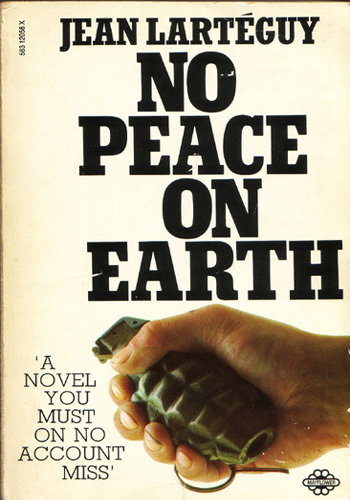 |
|
NO PEACE ON EARTH, 1971. Based
on his travels through the Middle East and Latin America, Larteguy fictionalizes
in these next two books what he couldn't write in his non-fiction accounts.
The theme of these books is "Every man is a civil war." A country in Central
America is thrown into chaos as two of the wealthy ruling elite families
try to eliminate each other's influence. Into this conflagaration melts
a band of guerrillas, US covert operatives and a high ranking UN official
with ties to both. Each of these factions must fight against their own internal
natures as they fight that of their foes. |
|
|
|
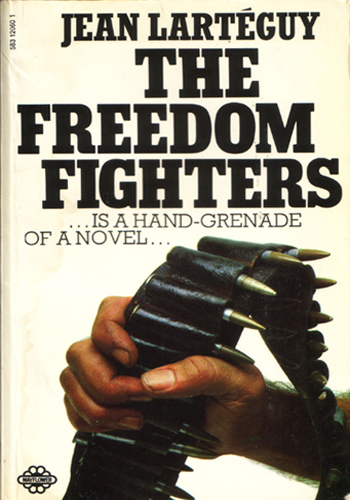 |
|
THE FREEDOM FIGHTERS, 1972.
This book continues where No Peace on Earth leaves off. The "mafia war"
between the two elite families reaches its bloody climax as the guerrillas
and Special Forces try to manipulate these events for a country in their
own vision. |
|
|
|
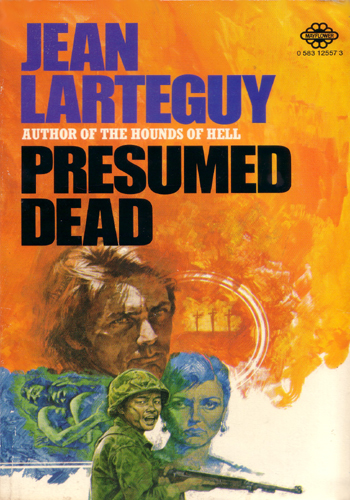 |
|
PRESUMED DEAD, 1976. Based on a real
event, Larteguy fictionalizes what may have happened to two war correspondents
who disappeared along the Cambodian border in 1970. One of the journalists,
Ron Clark, is based on Sean Flynn, son of Errol Flynn, who left behind
a lot of money to be inherited. The main character is a bank claims investigator
who must go to Southeast Asia to discover the truth about Clark's disappearance
and ascertain which next of kin is to inherit the money. Every relative
and friend of Clark tells him a different story about the missing journalist
and how he died, which creates a "Roshomon" mystery which he must untangle
if he is to gain closure on this case.
|
|
These are all the Larteguy books that have
been translated into English. He has many more books and articles that
are only available in French. His first book was a translation and editing
job of the Japanese book "Listen to the Voices from the Sea,"
which consisted of the last letters of the Kamikaze pilots. Excerpts from
these letters can be found at my other website about the Kamikazes at:
http://www.geocities.com/ctemplar270
BACK
TO HOME
|










